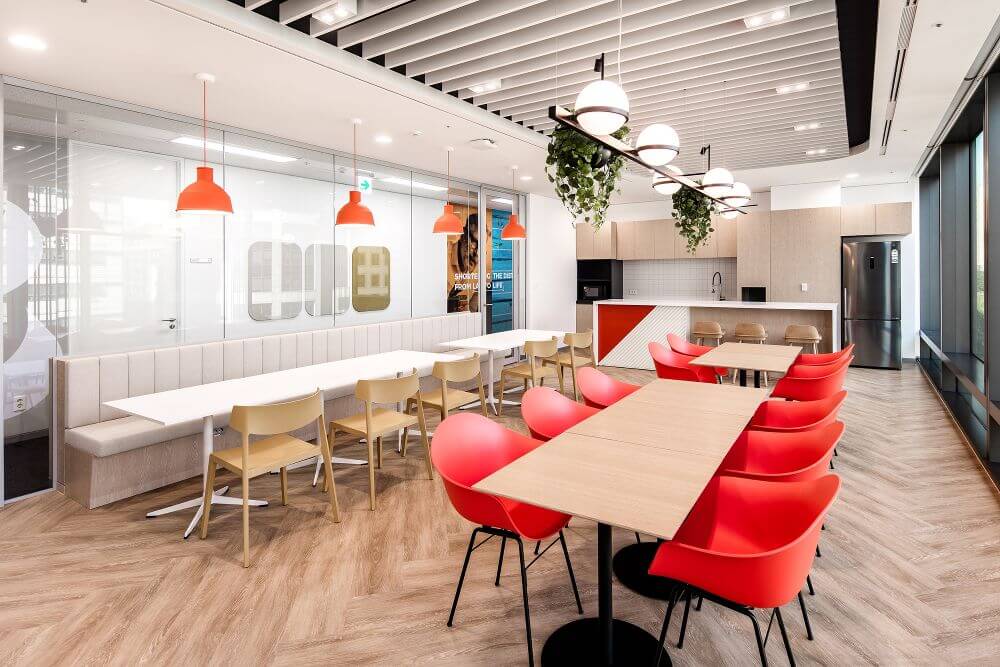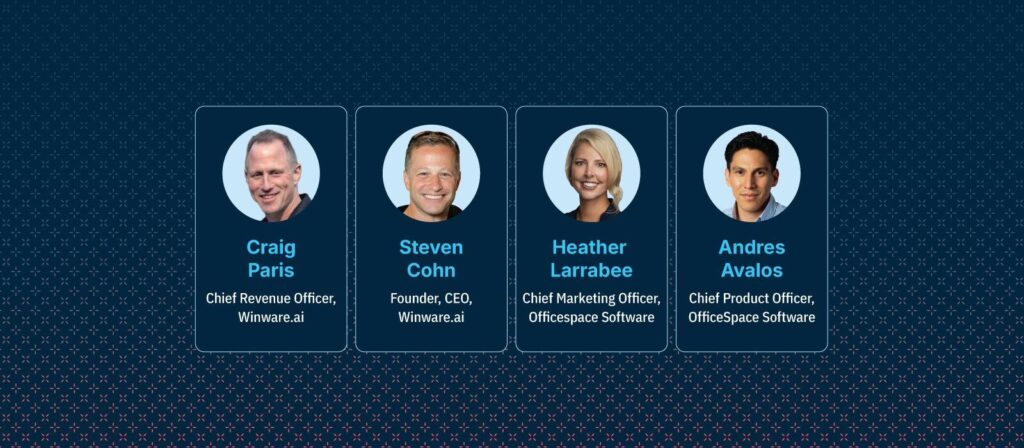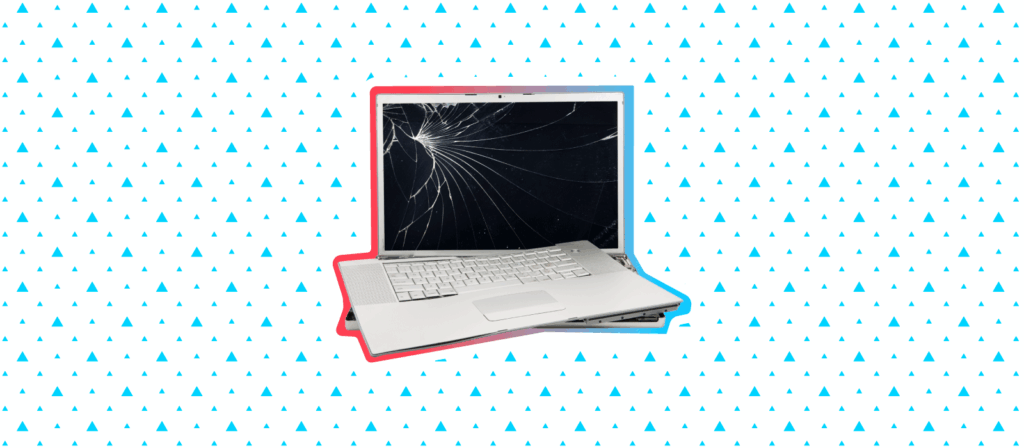Workplace analytics are driving the future of work. This is especially true as more and more companies are embracing hybrid work and other workplace trends. To manage increasingly complex workspaces properly, decision makers require analytics data that provides actionable insights. This allows for better, more informed choices and create future-proof policies for the office.
Companies can use workplace analytics to improve the office. But only when they get actionable data and have a plan for how to use it. Ultimately, using analytics metrics in the right way can increase employee engagement along with productivity and cost-savings.
In this article, we explore how workplace analytics can help companies better adopt new workplace trends. This includes how data teams should be collecting and leveraging analytics.
The growing importance of workplace analytics
Workplace analytics are the data that can be collected on work patterns, office use, employee engagement, building systems, and any other quantitative areas that impact the success of an organization. Thorough reports and analytics help decision makers in different departments understand what is actually happening on the ground, so they can ultimately improve it.
If there was any doubt before the pandemic, we now know that flexible working is here to stay. A variety of workplace trends are emerging to meet this new demand.
Companies can now choose between four different hybrid work models, along with a smorgasbord of new workplace trends:
- Office neighborhoods, where employees are grouped according department, project, or related criteria, always sitting with their ‘neighborhood’
- Activity-based working (ABW), where employees get to choose where they sit based on the task—i.e.: the activity— they’ll be performing
- Shift work, where employees are placed into rotating shifts
- Hoteling, where employees no longer have assigned desks, but can reserve desks in advance using a desk booking system
- Hot desking, where employees check-in to available desks on a first-come, first-serve basis
- Staggered schedules, where employees start and end their workday at different times, often to aid social distancing in traditional workplaces
- Agile working, where employees are given complete freedom to work when, where, and how they feel most productive
- Using IoT sensors to improve workplace efficiency, often in a free addressing seating system
The goal of virtually every new workplace trend is to improve both employee productivity and employee well-being.
In other words, these are employee-centric trends that ideally will create a better work-life balance for everyone.
Employees want flexibility and choice
The Great Resignation, coupled with the rapid shift to hybrid and remote working, is resulting in a new landscape. Employees have more choice than ever before. They’re demanding flexible work and modern workplaces, which means companies have to keep up with new trends if they want to remain competitive, retain top top talent, and attract new talent.
Flexible working comes with a variety of benefits, such as helping employees to avoid burnout and employers to reduce inefficiencies.
But flexible working is inherently complex, and without proper management—and proper data—it can get unwieldy fast.
Workplace analytics is the bridge that helps companies embrace these new trends and keep their workplace up-to-date.
Moreover, good workforce analytics can streamline space management, improve employee engagement, and make virtually every aspect of an office run more smoothly. This makes analytics a key tool for every company, even those with more traditional workplaces.
More and more, we’re seeing companies use data to power all their major decisions. In this sense, perhaps the biggest workplace trend we’re seeing is simply using workplace analytics in the first place.

Workplace analytics you need
It’s easy to confuse the concept of workplace analytics with Microsoft Workplace Analytics, which is an application that tracks how workers spend their time. This app includes ‘MyAnalytics,’ which is specifically designed for employee use.
While this type of data is important, alone it doesn’t give a complete picture of the work environment.
Decision makers need further occupancy data and insights if they are to make properly informed decisions for both employee productivity and employee well-being.
Specifically, IT, facility management, and other teams should be collecting reports and analytics from three key areas: operations, space utilization, and visibility.
Operational reports
Operational reports provide the bulk of the information that facility managers (FMs) need to perform their roles.
This can include preventative and predictive maintenance reports, as well as other key metrics about the status of your building systems.
It may not be flashy, but with good operational analytics and building data hygiene, leaders can make better decisions about critical issues like HVAC or building automation system security systems.
Space utilization reports
When many people talk about workplace analytics, they are actually talking about space utilization reporting.
Like the name suggests, space utilization is about how space is being used real-time in the office.
When a company improves space utilization, they can often reduce their real estate portfolio. This can lead to big cost savings as well as a reduced carbon footprint.
Moreover, like we’ve discussed, the workplace trends that are emerging are increasingly complex. Understanding your work environment requires more than glancing around the office. Only when decision leaders understand collaboration patterns on the ground, along with how well team members are able to use their given tools, can they make impactful and informed choices about how they’re using their space.
I’m a heavy user of occupancy and headcount reports. I run the Occupancy — By Location report twice a month to get a snapshot of how many seats, cubes, and rooms we have vacant to accommodate for new hires. I used to manually create these reports in Excel, but I could never pull them together as quickly or accurately as I can now with OfficeSpace.
Scott Moitoza, Senior Director of Real-Estate and Facilities, Procore
Visibility reports
Understanding who is in the office is critical information for everyone in an organization. This is especially true for those with hybrid or remote teams, or regular or frequent visitors.
This visibility often begins with badge integration reports. This can help companies track when and where in-office employees are sitting and using the office in general.
These can be coupled with sensors to create a real-time visual floorplan.
Visibility data helps team members collaborate, as well as more easily adapt to any workplace trends that employ flexible seating.
It can also help improve request management, and help FM and IT teams develop better desk booking and room booking strategies.
“You need visibility around employees using seats,” says Luke Anderson, VP of Product and Strategy at OfficeSpace. “For a facility management or real estate team, visibility reports let them plan and better understand their space in a very detailed way.”

How to use workplace analytics to streamline space management
One of the most essential uses of workplace analytics is to streamline space management.
To do this, managers first have to collect the right workplace metrics. This can include such metrics as cost per employee, occupancy, and operational costs.
Assuming they’re using the right software that aggregates this data in easy-to-understand reports, they can gain insight into how much space they have, how much they’re actually occupying, if and when they’re likely to run out of space, and/or where they can cut back on real estate.
This data can also be combined with real estate costs. This provides a better understanding of where they’re actually spending their budget.
Ideally, all this analytics data will be housed on an integrated workplace management system (IWMS). This way, it can be part of the complete digital ecosystem of the organization.

Smart companies embracing workplace trends with better data
The following business leaders are using workplace analytics to embrace workplace trends and improve employee experience.
Syneos Health’s return to the office with analytics
An end-to-end biopharmaceutical organization with cross-functional teams requiring in-office access, going fully remote just wasn’t an option for Syneos Health® when the pandemic hit. The only way to safely navigate a quick return to the office was with a workplace management platform that included robust workplace analytics.
Specifically, Syneos used workplace reports to ensure each of its five critical sites were adhering to safety protocols. With this data they were also able to quickly increase or decrease capacity limits, as well as to convert a 400-seat office from assigned seating to hot desking in just two hours.
The company is now using the same software it used to survive the pandemic to now plan for the future.
“Knowing who’s using our offices, having good data on occupancy, good data, and utilization, that’s going to be critical as we fine tune the portfolio on the other side of this [pandemic],” says Patrick Hoffman, SVP of Corporate Real Estate and Services at Syneos Health. “And I can’t imagine how you would do that without a tool like OfficeSpace.”
In Mexico, we had to comply with six-feet social distancing between desks and a 20% capacity limit. It only took us two hours to convert a 400-seat office from assigned seating to hot desking using OfficeSpace.
Alberto Reyes, Corporate Real Estate Manager LATAM, Syneos Health
Rapid7’s seamless relocation using analytics
Rapid7 is a global leader in cybersecurity that is committed to maintaining a high level of employee experience. One of the ways they do this is by giving employees an all-in-one platform that makes it easy to connect with co-workers, book desks, and navigate their digital workspace.
This same platform also offered the necessary analytics reports and logistics to create real-time floor plans and quickly relocate 600 employees for a recent big move. Thanks to the right data coupled with collaborative virtual drafts, the team was able to plan and implement this massive move over one single weekend.
Harry’s analytics-powered onboarding and moves
International quality shaving and grooming company Harry’s uses workplace data to streamline onboarding new employees—which is critical, since they hire new employees every two weeks.
Specifically, they use data to figure out where new employees will sit, while also staying on top of their ever-changing space utilization. This same data helps with both one-off moves and larger office reshufflers.
“I send managers a floor plan in Visual directory, so they can see where their team will be sitting and assign where folks should sit when they move,” says Celeste Candela, Workplace Experience Manager at Harry’s. “They’ll send that back to me and my team will make the updates for them in OfficeSpace.”

Mindful workplace analytics
Finally, no discussion of workplace analytics is complete without considering the potential pitfalls of collecting too much of the wrong type of data.
Specifically, team productivity and collaboration apps such as Microsoft Teams can collect a variety of insights on specific employees. While this may technically offer benefits at the organizational level, some employees may find it intrusive or oppressive to have their personal data collected.
That’s why companies will need to carefully chart a course that tracks the right workplace analytics they need to make better business decisions, while also maintaining a positive work culture. This is a balancing act that will look a little different for each company.
What is the main benefit of workplace analytics?
The main benefit of workplace analytics is simple: it empowers office leaders to create a bespoke workplace without limits, that can better meet both short-term and long-term needs and goals.
OfficeSpace provides the right tools to capture and understand the right workplace analytics for your organization. Reach out for a free demo.
Photos: Ruthson Zimmerman, ThisisEngineering RAEng, Daniel McCullough, Towfiqu barbhuiya




